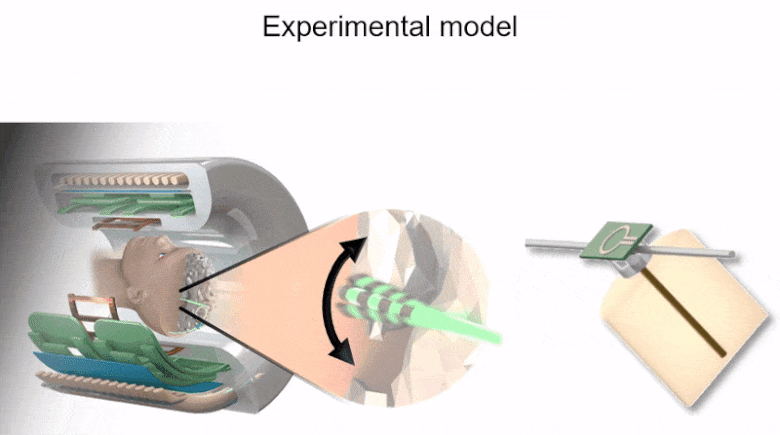
The frequency spectrum of gradient pulses applied during the acquisition of MR images overlaps mostly with the mechanical resonance frequencies of active implanted medical devices such as neural implants. This raises the important question if it is possible to trigger accidentally amplified mechanical vibration during MR acquisition which poses a severe risk to the patient, especially when we focus on brain implants.
To this day, however, no quantitative methodology has been available, that enables the analysis of the dynamic mechanical behaviour of such active implants. To overcome this challenge, we have developed a model system, which enables the analysis of implant-like structures in a brain-like environment. A laser-based, optical setup features high-precision measurements of sample vibrations with respect to the frequency behaviour and oscillation amplitudes inside viscoelastic environments.
The system operates in two modes. In the first mode we can precisely analyse the transfer function of an implant-like structure embedded in a viscoelastic gel. Subsequently, the second mode, is used to measure vibrations induced by standard MR acquisition procedure. Knowing the exact dynamics of the system enables us to trigger amplified resonance vibration or, even more importantly, to avoid these resonances by the prudent choice of timing parameters for the MR sequence. The obtained results are underpinned by a detailed mathematical model of the investigated system.
The key finding is that implant-like structures exhibit underdamped vibration which leads to resonance magnification. The current approach to reduce the risk of gradient-induced vibration is to limit the gradient slew rate. Our findings clearly demonstrate that it is equally important to take into account the timing parameters of the MR sequence to avoid large amplitude vibrations. In addition, we suggest to analyse implants on their mechanical behaviour which can improve their MR compatibility.

